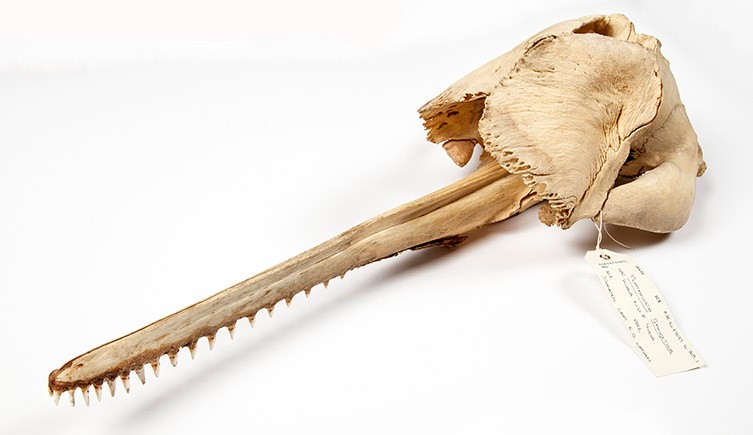
Sperm whales use echolocation to hunt squid in the deep sea
Echolocation gives whales lopsided heads
By Katie Pavid
SCIENCE NEWS
First published 10 July 2020
Toothed whales developed asymmetric skulls to help with ecolocation, a new study reveals.
In most toothed whales, the internal organs in the skull are squashed into the left side to make way for soft tissues which help them to echolocate.
Echolocation is a technique used by animals that need to navigate and hunt in the dark. They emit high-pitched sounds which bounce off objects and are reflected back at the animal. These reflected noises help the brain to build an image of the animal's surroundings, allowing them to 'see' where objects are and how they are moving.
Only some whales, dolphins, and porpoises (collectively known as cetaceans) can do this. Cetaceans are split into two groups, those with teeth and those with baleen. Baleen whales (mysticetes), including blue whales and humpback whales, filter ocean water for tiny crustaceans and fish and do not need to ecolocate. Cetaceans with teeth (odontocetes) include dolphins, killer whales, belugas, narwhals, and sperm whales, and these animals hunt in a variety of marine environments. Echolocation helps them do it.
A new research paper, published in BMC Biology, has examined the skulls of ancient and modern whales to find out more about when and why they developed this ability and why it gave them such a unique head shape.
Ellen Coombs, a PhD student at the Museum and the lead author of the paper, says, 'Scientists know that toothed whales have wonky skulls, and that's because they echolocate. Their wonky skulls have a whole load of extra soft tissue above them called the melon.
'We were looking at the evolution of this wonkiness - when it first evolved, how wonky the skull is, and whether some are more wonky than others.'
The earliest ancestors of whales were ancient animals called archaeocetes. They had wonky snouts which possibly helped them hear well underwater, but they couldn't echolocate. Researchers don't know a lot about how whale skulls evolved from there to the neocetes - the animals including the most recent common ancestor of living cetaceans
This new paper is the first time researchers have studied asymmetry across such a broad range of whales, dolphins, and porpoises over their whole 50-million-year evolution. Ellen and her colleagues studied 162 skulls (of which 78 were fossil and 84 were from living animals) including 34 from the Museum's world-leading marine mammal collection.
Baleen whales and toothed whales started to evolve differently about 36 million years ago.
Baleen whale faces stayed symmetrical, but Ellen found that for toothed whales, wonkiness became a significant facial feature about 30 million years ago, and they have gotten more and more lopsided as they continue to evolve.

Ganges river dolphins echolocate a whole octave lower that other whales and dolphins and have an unusual crest on their skulls to help focus echolocation. This specimen of a river dolphin is in the Museum's marine mammal research collection.
Ellen explains, 'We found the wonky snout started to disappear but then the toothed whales get a lopsided facial region.
'We also found that whales living in extreme environments such as narwhals, belugas, river dolphins and deep-diving sperm whales rely on echolocation more than other whales, and so have even more strangely shaped heads.
'They live in weird environments, either shallow icy water, murky rivers or the very deep ocean, so we think they are starting to have a really specialised type of ecolocation. That's something that needs to be studied more in the future.'
No comments:
Post a Comment